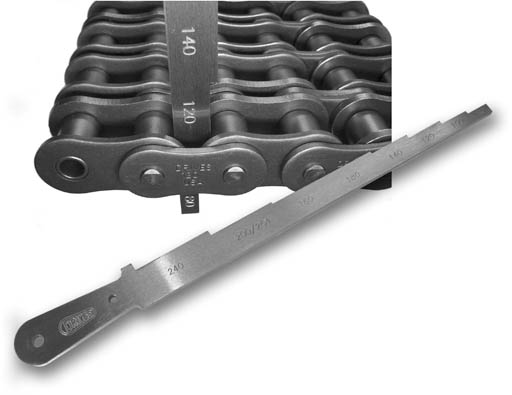When it comes to routine maintenance, a roller chain is one of the most neglected system components due to its inexpensive cost value. Because they are commonly covered by guards, too, they often fall “out-of-sight, out-of-mind,” only becoming a priority once the chain starts acting up and making noise.
However, proper roller chain maintenance might be more important than you think. “A roller chain is a key component to a bigger system and can end up costing you a lot of downtime down the road if you neglect it,” says Tim Zerger, IBT Director of Bearings and Power Transmission.
Learning to identify, measure, and prevent the common wear-and-tear in even the smallest, most inexpensive parts of your systems can help keep your operations running smoothly and longer. For this reason, it’s important to know how to measure roller chain stretch.
More: Roller Chain Installation—A Guide To Trouble-Free Operation
What Is Industrial Chain Stretch?
The name “chain stretch” is actually fairly misleading. Contrary to popular belief, the chain isn’t stretching at all. Instead, it refers to when a chain begins to wear down. The “stretching” happens from wear and tear, leaving less material behind.
“The real name is chain elongation,” says Zerger, “It occurs when the chain articulates as it goes around the sprocket, and the pin wears on the bushing to the point that the length of the pitch elongates.”
What Causes Industrial Chain Stretch?
Typically, chain stretch is caused by normal wear and tear. However, there can be other culprits that contribute to the elongation of a roller chain, which is the most common type of chain used in manufacturing and assembly settings. These chains are made up of multiple parts, including an outer plate, inner plate, pin, roller, and bushing.
Causes of chain stretch outside of expected wear usually have to do with the pin. Chain stretch can quickly occur if the pin is:
- Bent to a certain degree or angle.
- Losing material due to friction, thereby changing in diameter.
- Too small due to widening of the chain’s holes.
Because chain stretch can have a detrimental impact on your application—no matter the industry—it’s important to recognize the signs that chain stretch is occurring. One way to know is to record a chain size measurement of the roller chain.
How To Measure Chain Stretch

According to Timken Drives’ Drives Product Manager, Richard Neuhengen, “The chain is defined to be worn out when it has grown by three percent of its original length. It’s at this point that one will have to replace the sprocket, also.”
Luckily, there’s an easy solution to measure whether or not your chain has worn, or your chain has “stretched,” without removing the chain from the sprockets. Timken Drives offers an EZ Chain Wear Gauge that measures the distance between two roller links, in place, by dropping it down between them.
All you need to know is the standard dimensions of your chain, and its tapered design will do the rest with these four easy steps (note: All tag-out procedures should be followed prior to measuring the roller chain):
- Identify chain pitch size.
- Locate the corresponding step on the gauge.
- Check the gauge for fit between any two roller links (do this with the chain in tension).
- If the gauge step fits through the checkpoint, the chain is worn out and needs to be replaced (gauge should be in line, directly below any outside link plate).
Made from tough steel, this gauge accurately checks up to nine sizes of American Standard roller chains. “It’s my number one recommendation for chain stretch measurement because it’s easy to use, and you can’t mess it up. It either goes or it doesn’t,” Zerger says.
How To Prevent Chain Stretch
The best method for preventing roller chain stretch is observation and effective lubrication.
When a chain gets rained on, dirty, or dusty, the lubrication barrier will quickly diminish if not reapplied regularly. “If you’re not paying attention to your chain━how it’s wearing, how it’s stretching, and how it’s lubricated━you’re damaging both your chain and your sprockets,” says Zerger.
Other benefits of effective lubrication? “Cushions impact loads, rust prevention, dissipates heat, flushes away contaminants,” and, according to Neuhengen, “Properly lubricated chains can last more than 100 times as long as poorly lubricated chains.”
About IBT’s Bearing & Power Transmission Group
Mechanical Power Transmission has been a cornerstone of the IBT Industrial Solutions business since the company was founded in 1949. If you’re looking for the knowledge and expertise you need to keep your applications up and running, contact Tim Zerger, the Bearing and PT Business Group Director at IBT Industrial Solutions, or give us a call at 913-677-3151 to learn more.
[hubspot type=cta portal=6200588 id=df30f85e-69ce-4398-a06c-b413286298ac]





